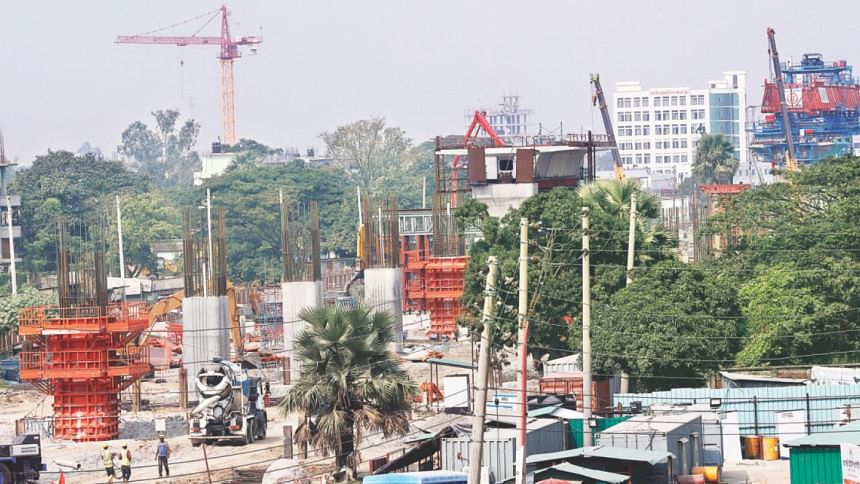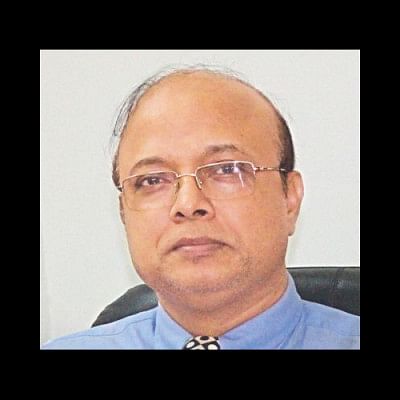“To have a city-wide effect, we need several metro lines”


Given the traffic situation of the capital city, to what extent can the Dhaka Metro Rail project be effective?
We just started constructing our first rail-based elevated metro line route. This form of transportation is entirely new to the country. People's movements are multipoint. One single route cannot create a significant impact. Thus, to have a city-wide effect, we need several metro line routes. Seoul, for example, has as many as 22 routes.
As a city authority, when one thinks of getting the optimal value for money, one looks for the best possible solutions through minimal expenditure. In this context, the first step is to improve the walkway network. Secondly, a bicycle network needs to be created. The combination of both walkway and bicycle networks may have a significant impact in Dhaka if planned, maintained and implemented properly. Unfortunately, the next important mode of bus network in our capital city is quite undisciplined and inefficient. Installation of these networks is a prerequisite as a formal start-up of the city public transport system which ultimately needs to be supplemented with metro rail system that adds further capacity on top of the road-based system, obviously at a significantly higher cost.
What are your observations on the implementation process of the Dhaka Metro Rail project?
Dhaka is already a very densely populated city. Amidst such a scenario, the construction process of an elevated metro rail system has obvious adverse effects, such as increase in traffic jams and air pollution. These issues are likely to persist even after completion of the project due to narrowing of existing road width and disturbances from metro station ingress and egress activities.
We had an option of building the metro rail underground, which would not affect the actual width of our roads. What is the point of reducing the space available on our roads for these developments? We could have avoided frictions, both duringthe construction and operation phases, if the project had taken place underground.
Lapses have occurred during the planning stages, rather than in the course of implementation. Renowned Japanese companies are supervising the project, and hopefully, they will do it efficiently.
The development of local expertise though is critical. In India, the first metro rail project was donewith the direct involvement of a foreign contractor. The locals then developed their professional capacity learning from their international colleagues and were able to utilise their expertise in other such projects. Bangladesh's metro rail authorities need to learn from this and undertake a similar approach.
What are the challenges for the implementation of the project?
Firstly, during the implementation stage, factors such as utility relocation, soil investigations and construction processes create difficulties for residents of respective areas. It gets worse for the public when the real construction work begins.
It is particularly important to integrate the metro rail system with other forms of public transportation to make the metro useful and accessible for passengers. It is also a considerable challenge because the transportation system in Dhaka, as disorderly as it is, needs to become disciplined and integrated with a disciplined system like the metro.
How can public sufferings be reduced?
As various construction works are taking place on existing road, public sufferings will continue. Urban area construction cannot be done through on-site concrete castingas this will create disturbances on the roads for extended periods of time. In many countries, prefabricated elements are manufactured in factories outside of the city and brought in all at once to the construction site to be put together. It is done to reduce the work and maintenance involved on the road site. We are yet to see such smart approach taken by the developers of the metro rail to counter these issues.
Since the concept of Dhaka Metro Rail project is new for Bangladesh, what are the key lessons from this project?
The most critical factors are institutional and professional capacities. We need to develop our capabilities in these areas in accordance with the scale of a country like Bangladesh. The capital has about 16 million people, and our transportation setup needs to reflect the requirements of our people. More time needs to be given to construction planning and project scheme selection phases in order to avoid later hassles in the field.
Can Dhaka city go on with the current public transport system? Can we go on with the way our traffic light operationsare currently managed? Even a rickshaw should be operated professionally in a city as big as Dhaka. Proper enforcement of rules and laws is also a must.
As we know, more projects such as the Dhaka Elevated Expressway (DEE) and Mouchak-Moghbazar flyover are being implemented to improve the traffic situation in the capital. How can we ensure better integration among all these transportation projects including Dhaka Metro Rail?
The management of all these operations needs supervision. We must have dedicated professionals who can perform the day-to-day integrated operation and management.
For instance, Dhaka airport is a transport facility which hasa structured hierarchy of operations personnel. Where is that structured operation for the transport system in our capital? If we ask our city's metropolitan police to operate the city's airport, I believe it will lead to a traffic jam on the runway similar to that of the city's roads.
The problem here is, the transport sector public agencies are still at a stage which is only good enough to run a low-profile informal economy transport sector. Bangladesh's economy, however, has crossed the mark of a low-income country. Thus, we cannot run a transport system with authorities who are not up to the mark.
We need to develop and empower transport sector professional institutions to act as capable authorities who can manage, coordinate and integrate various transport modes, plan and strategise future transport funding and development matching the country's development vision.

 For all latest news, follow The Daily Star's Google News channel.
For all latest news, follow The Daily Star's Google News channel. 



Comments